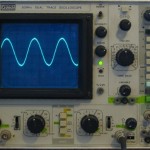 Dr. Novella is a Neurologist at the Yale University School of Medicine, as well as the president of the New England Skeptical Society. He recently published an article on NeuroLogica about the pseudoscience that ghost hunting is and especially the use of the infamous ‘Ghost Box’ or ‘Frank’s Box’.
Dr. Novella is a Neurologist at the Yale University School of Medicine, as well as the president of the New England Skeptical Society. He recently published an article on NeuroLogica about the pseudoscience that ghost hunting is and especially the use of the infamous ‘Ghost Box’ or ‘Frank’s Box’.
What does Dr. Novella think about this contraption? Pareidolia.
I’ve written a few articles about these so-called “ghost boxes” and each and every time that I do, the end conclusion is the same. People hear what they want to hear through pareidolia.
Dr. Novella gives us an insight perspective on how modern science views such claims.
14 commentsFull source: NeuroLogica
What you hear, then, is what you would hear if you had an old radio with an analogue dial and you simply moved the dial quickly up and down the frequencies. You get a mix of static with snippets of speech or music. It is a perfect set up for generating audio pareidolia. The practice emerged out of electronic voice phenomenon (EVP), in which ghost hunters listen to hours of audio recorded in an allegedly haunted location and listen for noise that their brains can interpret as words. They then impose meaning on the random words. The ghost box just speeds up the process by generating “raw audio” for the pareidolia.There are two layers of pattern recognition that are occurring when we have an eager ghost hunter sitting in front of a radio scanner (sorry, I mean “ghost box”) listening for the ghosts. The first layers is hearing words, names, or phrases. Sometimes the words are actual words coming through from a radio station. Sometimes, however, they are just noise that the brain tries to match to a word. Here is a great example – most of the words and phrases “heard” by the ghost hunter in this video are more imagination than anything else. I suggest you listen to the audio without the video and write down any words that you think you hear. Then watch the video and see if they match what the ghost hunter thought he heard.
On the video the alleged words flash up on the screen, so that suggestion will kick in. This is a well-known phenomenon – when a word or phrase is suggested to you, your brain will hear what is suggested. Here is a funny example – the “O Fortuna” lyrics misinterpreted as funny phrases. (Perhaps ghosts are trying to communicate through the lyrics of foreign-language music.)
There is also a second layer of pattern recognition, however – the meaning of the words. People are very good at inferring meaning, which is a useful skill in a highly social species. Like many such things, we are too good in that we tend to over-infer meaning. I see people do this all the time with their pets. They assign very sophisticated human understanding and intent to behaviors that probably have a much simpler explanation. We saw this also when researchers tried to teach apes to communicate with sign language. The researchers were very good at inferring what the apes meant even when signing essentially randomly. Sometimes, for example, the animal would try to be funny or playful by signing the opposite of what he meant.
We see the same thing in the ghost box video. The ghost hunter is good at taking the random words and phrases and inferring some meaning from them. He is then very impressed by the pattern of responses, concluding that there must be some intelligence behind them. Of course there is an intelligence at work, but it is at the receiving end of the words. Any apparent meaning to the alleged words is coming from the minds of those making the connection. In this way it is similar to a cold reading. The person making all the connections in a cold reading is not the reader but the subject. They are finding meaning in the questions and fragments (I see a letter “J”) that the cold reader is throwing out.
This general phenomenon is very common – seeing patterns in randomness and then being overly impressed at the connections. The naive premise for the believer is that if there were not a real external phenomenon going on (in this case, ghosts) then the apparent connections would not be there. This premise, however, is false. Humans are good at finding connections anywhere, and in that way we often deceive ourselves into thinking there is something there when there isn’t.
Read the rest of the article: NeuroLogica





